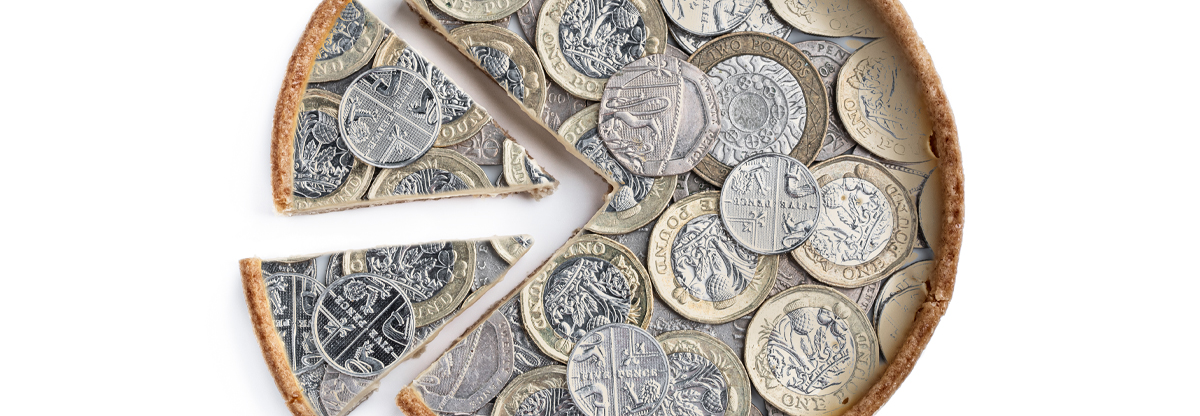Blog
A deep-dive into a variety of pension topics to help you understand and learn more about your pension and the Scheme.
Menu
A deep-dive into a variety of pension topics to help you understand and learn more about your pension and the Scheme.
Our blogs will give you information, tips, insights and guidance to help you get to know your pension and support you on your journey to retirement.


Navigating retirement ages can be confusing, however understanding them and how they affect your retirement planning is key to making decisions that are right for you long term.
Here’s a breakdown of each one in simple terms:
Your Normal Retirement Age (NRA) is the age at which you can take your RPS benefits in full. It’s set by Scheme rules and varies by Section:
Your Target Retirement Age (TRA) is the age you plan or aim to take your pension – it’s not fixed by the Scheme rules, instead it’s something you choose.
If you are a member of the Industry-Wide Defined Contribution (IWDC) Section or you save extra towards your pension with Additional Voluntary Contributions (AVCs), your TRA is particularly important as it influences how your money is invested over time. For example, if you’ve left it to the Scheme investment experts to manage your investments, they might decide to move your money in less risky funds as you approach your TRA. So, you need to think carefully before setting this.
Your TRA can be earlier or later than your NRA – but be aware that if you take your pension early, it may be reduced.
You can change your TRA in your myRPS account at any time.
Your State Pension age (SPA) is set by the government. It’s the age when you can claim your State Pension, which is a totally separate source of retirement income from your RPS pension.
The SPA is currently 66 or 67 for most people, depending on your date of birth, however it is scheduled to increase to 68 in future.
You can check your SPA using the government’s State Pension age calculator.
/state-pension-isn-t-enough-1200x416-(1).jpg?sfvrsn=8e09b639_3)
3/4/2024
Author: Editorial
<p>The government recently announced that the State Pension will increase by 8.5%, under its commitment to the State Pension triple lock. The triple lock ensures that the State Pension doesn’t lose value over time. You can <a href="https://commonslibrary.parliament.uk/the-triple-lock-how-will-state-pensions-be-uprated-in-future/" target="_blank" data-sf-ec-immutable="">learn more about it here.</a></p><p>With the increase, you might be able to claim up to approximately £11,500 a year in State Pension from the government. </p><p>While that might <em>sound</em> like enough to help you get by, the reality is if you’re planning to live on the State Pension alone you may find yourself short of cash. </p><p>Here’s why the State Pension might not be enough for you to live on, and our top tips to help you save more for your life after work with your RPS pension, including <a href="https://member.railwayspensions.co.uk/pension-essentials/saving-more" data-sf-ec-immutable="">making Additional Voluntary Contributions (AVCs).</a></p><h4> </h4><h4>Why the State Pension might not be enough:</h4><h3>The cost of retirement is higher than ever</h3><p>The Pensions and Lifetime Savings Association (PLSA) has released their updated <a href="https://www.retirementlivingstandards.org.uk/" target="_blank" data-sf-ec-immutable="">Retirement Living Standards (RLS).</a> The RLS estimate how much you might need in retirement each year, based on 3 different standards of living – minimum, moderate and comfortable. </p><p>According to the RLS, a single person needs £14,400 to afford a ‘minimum’ standard of living. That means even if you’re able to claim the full amount of State Pension, you’ll be approximately £2,900 short of a minimum standard of living in retirement. And that’s without budgeting for any extra personal costs, such as mortgage or rental outgoings.</p><p>To get an idea of how much you might need <a href="https://member.railwayspensions.co.uk/login" data-sf-ec-immutable="">try the Retirement Budgeting Calculator in your myRPS account</a>. It’s based on the RLS and lets you add your personal lifestyle costs, including how many holidays you’d like per year, your motoring or transport costs and where you plan on living. <br></p><h3><br>You might not be able to claim the full amount of State Pension</h3><p>The amount of State Pension you’ll get depends on your National Insurance (NI) record. To claim the full amount of the State Pension, you’ll need 35 qualifying years of NI contributions or credits.* You can <a href="https://www.gov.uk/check-state-pension" target="_blank" data-sf-ec-immutable="">check your State Pension forecast at Gov.uk</a>. </p><p>If you’ve previously worked part-time, you might not have paid as many NI contributions or credits over the years. And, this could impact the amount of State Pension you might be able to claim later. </p><p>You may be able to ‘top up’ your NI record by paying voluntary contributions, if you’re eligible. You can <a href="https://www.gov.uk/voluntary-national-insurance-contributions" target="_blank" data-sf-ec-immutable="">learn more about Voluntary National Insurance at Gov.uk</a>.<br><br></p><h3>You'll need to wait until your State Pension age (SPA) to claim it<br></h3><p>You won’t be able to claim your State Pension until <a href="https://www.gov.uk/state-pension-age" target="_blank" data-sf-ec-immutable="">your State Pension age (SPA)</a>, which is currently age 66 for both men and women. </p><p>But, the SPA is set to increase again from May 2026. So, if you’re planning to retire before you reach your SPA, you’ll need to consider how you’ll pay for your retirement during that time.<br><br></p><h3>The State Pension is currently less than the National Minimum Wage<em></em></h3><p>In life after work, most of us would like to continue the lifestyle we’ve enjoyed while working. But, living off the State Pension alone might mean it’s difficult to maintain that standard of living. Here’s an example to explain why. </p><p>If, while you were working, you earned the National Minimum Wage and worked 35 hours per week, your yearly income would be approximately £19,000. </p><p>If you then reach State Pension Age (SPA), and are able to claim the full amount of State Pension from the government, your State Pension income would be approximately £11,500 a year. </p><p>Comparatively, your State Pension income would be roughly £7,500 less than the income you had while you were working. This could significantly impact the lifestyle you’re able to afford in retirement. What’s more, the difference could be even greater if you’re not able to claim the full amount of State Pension. <br><br></p><h3>Your State Pension might not increase if you live abroad</h3><p>Moving abroad to spend retirement under the sun is something many of us have dreamt about. While the idea of life after work in another country might capture your interest, it’s important to consider that your State Pension might not increase while you’re living there.</p><p>Currently, your State Pension will only increase each year if you live in:</p><ul><li>The <a href="https://www.gov.uk/eu-eea" target="_blank" data-sf-ec-immutable="">European Economic Area (EEA)</a></li></ul><ul><li>Gibraltar</li></ul><ul><li>Switzerland</li></ul><ul><li><a href="https://www.gov.uk/government/publications/state-pensions-annual-increases-if-you-live-abroad/countries-where-we-pay-an-annual-increase-in-the-state-pension" target="_blank" data-sf-ec-immutable="">Countries that have a social security agreement with the UK</a> (but you cannot get increases in Canada or New Zealand)</li></ul><p>You will not get yearly State Pension increases if you live outside these countries. However, your State Pension will go up to the current rate if you move back to the UK. </p><p>You can learn more about how your State pension is affected, including how you can claim it if you move abroad at <a href="https://www.gov.uk/state-pension-if-you-retire-abroad/rates-of-state-pension" target="_blank" data-sf-ec-immutable="">Gov.uk</a>. </p><h4> </h4><h4>How you could save more:</h4><p>As a member of the Railways Pension Scheme (RPS), you’re already saving towards a retirement income which you’ll get separate to your State Pension.</p><p>You can find out how much you might get from your RPS pension by using the <a href="https://member.railwayspensions.co.uk/login" data-sf-ec-immutable="">pension planning tools in your myRPS account.</a></p><p>Here’s how being part of the RPS is already helping you save towards your retirement, and how you could save even more for your future…</p><h3><br>You’re increasing your savings with tax relief</h3><p>A fantastic thing about saving with your RPS pension is that its tax efficient, because the money you pay in is taken from your salary before tax is deducted. This means you pay less tax on your salary. Over the years this can add up to a substantial amount.</p><p>The amount of tax relief you get depends on the rate of income tax you pay. Basic-rate taxpayers (who pay 20% income tax) get tax relief at the same rate. If you’re a higher-rate taxpayer you get 40% tax relief, and additional-rate taxpayers get 45%.</p><p>For example, if you’re a basic-rate tax payer (who pays 20% income tax) and put £100 into your pension, it would actually only cost you £80. That’s because the other £20 comes from tax relief.</p><p>You can pay in as much money as you want into your pension, but there’s limits on the amount of pension savings that benefit from tax relief each year, before you have to pay tax. You can <a href="https://member.railwayspensions.co.uk/pension-essentials/pension-tax-limits" data-sf-ec-immutable="">learn about the limits, and watch a short video on how tax relief works on the Pension tax limits page</a>. <br><br></p><h3>You can pay more in with Additional Voluntary Contributions (AVCs)</h3><p>‘Topping up’ your pension with AVCs could help pay for your life after work. AVCs are extra contributions you pay into the Scheme, on top of the regular contributions you and your employer pay in while you’re working. </p><p>AVCs might help you save more, particularly if you’re thinking about taking your pension early, or before your State Pension Age (SPA). </p><p>You can pay in as little as £2 a week, and you can make one-off payments if you wish. If you earn extra money like overtime or bonuses, or if you receive a monetary gift, paying it into AVCs is an excellent way to boost your potential retirement savings. Plus, you get tax relief on the money you pay in, up to certain limits. </p><p>If you want to start paying AVCs, you should speak to your employer. Here’s where you can find more information:</p><ul><li>If you’re a defined benefit (DB) member, the main AVC arrangement is called BRASS. <a href="https://member.railwayspensions.co.uk/defined-benefit-members/saving-more-BRASS-AVC-Extra/saving-more-with-BRASS" data-sf-ec-immutable="">Visit the Saving more with BRASS page to find out more</a>. </li><li>If you’re an IWDC member, you can save more by paying more contributions. <a href="https://member.railwayspensions.co.uk/iwdc-members/Im-still-working/saving-more" data-sf-ec-immutable="">Visit the Saving more with Additional Voluntary Contributions (AVCs) to learn more</a>.</li></ul><p>The <a href="https://member.railwayspensions.co.uk/login" data-sf-ec-immutable="">MoneyFit tool in your myRPS account</a> can help you manage your money, and offer helpful tips to possibly free-up a little more to contribute to your pension savings.<br><br></p><h3>You can take control of your pension and plan for the future </h3><p>You can see how much your RPS pension might be worth when you retire using the pension planning tools in your secure myRPS account. If you haven’t already, <a href="https://member.railwayspensions.co.uk/register" data-sf-ec-immutable="">you can register for your myRPS account here</a>. </p><p>With an online account, you can request an estimate of your pension benefits quickly and easily. This will give you an idea of what your RPS pension might be worth, based on your current pension payments. </p><p>You can then try the pension planning tools in your account to see how saving more might make a difference to your retirement savings. Using the planning tools you can adjust the amount you pay in, and see how contributing more with AVCs could boost your savings. </p><ul><li>Defined Benefit (DB) members can use the Pension Planner tool.</li><li>Industry-Wide Defined Contribution (IWDC) members can use the Retirement Modeller.</li></ul><p> </p><p>*<em>Figures correct as at April 2024, but may be subject to change. Full details can be found at </em> <a href="https://www.gov.uk/new-state-pension/what-youll-get" target="_blank" data-sf-ec-immutable="" data-sf-marked=""><em>gov.uk/new-state-pension/what-youll-get</em></a><em>.</em></p>
The State Pension will increase by 8.5%, to £221.20 a week in April. But will that be enough to live on when you stop work…

25/6/2025
Author: Editorial
<p>One thing members often ask us to explain to them is what Pensionable Pay means, as defined in the Scheme Rules, and how it differs from another term they come across, Section Pay. </p><p>We frequently use both of these terms when we talk about the contributions you and your employer pay into your pension.</p><p>Explaining the difference between the two in laymen’s terms is not an easy job but we have had a go at breaking it all down below. </p><h3>Defining Pensionable Pay</h3><p>Pensionable Pay is the annual salary amount we use to calculate both your pension contributions and your pension benefits. </p><p>Depending on the policies of the employer you work for and the nature of your job, your annual salary may be made up of your basic salary plus overtime, bonus payments and other payments too. </p><p>However, not all of these parts of your overall salary may count towards your pension. For example, some employers may consider overtime pay as pensionable, but others may not. </p><p>By definition and in line with the Scheme Rules, your Pensionable Pay is the part of your salary that your employer decides will count towards your pension. It is the amount on 1 April every year and remains fixed until the following April. This may be capped in some sections. More on this is available in your member guide. You can find it when you <a href="/my-rps">log into your myRPS account</a>.</p><p>Your Pensionable Pay may not be equal to your total annual salary that your receive. Please speak to your employer to understand which part of your annual salary counts towards your pension and is therefore classed as pensionable. </p><h3>Defining Section Pay </h3><p>The contributions you and your employer pay in to your pension are worked out based on a set percentage of your Section Pay. This may also be capped in some sections. </p><p><strong>Your Section Pay is your Pensionable Pay less 1.5 times the basic State Pension</strong></p><p>For most of the Railways Pension Scheme sections, a value of 1.5 times the <a id="_anchor_5" href="https://railpen-my.sharepoint.com/personal/jenny_prodanova_railpen_com/Documents/0.Personal/2025/Blogs/Pensionable%20pay%20vs%20section%20pay/Pensionable%20pay%20vs%20section%20pay%20blog_v5HP%20-%20Copy.docx#_msocom_5" name="_msoanchor_5" data-sf-ec-immutable=""></a>Basic State Pension is taken away (or ‘offset’) from your Pensionable Pay (the amount your employer confirms is pensionable at 1 April each year). <a href="/my-rps">Check your member guide</a> to see if this calculation is applicable to you. </p><p>The amount of the Basic State Pension is set by the government. It can change and usually goes up every year. </p><p>The amount left (your Section Pay) is used to work out how much you and your employer should pay into your RPS pension each pay period. Give our <a href="https://member.railwayspensions.co.uk/knowledge-hub/news-and-views/blog/rps-blog/2025/06/18/understanding-your-db-contributions" data-sf-ec-immutable="" data-sf-marked="">Understanding your Defined Benefit contributions blog</a> a read to understand more about your pension contributions. <strong></strong></p><p>Your Section Pay will never be less than half of your Pensionable Pay.</p><p>Here's an example of how Section Pay is calculated in the Scheme:<br></p><p><img src="https://cdn3.railpen.com/mp-sitefinity-prod/images/default-source/news-images-(2023-on)/example-of-how-section-pay-is-calculated-720px---v2.png?sfvrsn=d0d2b986_1" width="700" alt=""></p>
A short overview of two terms we commonly use when it comes to your RPS pension.

15/9/2025
Author: Editorial
<p>It isn’t a cheerful topic, but it’s an important one - especially if you want to make sure the ones you care about are looked after. <br></p><p>In a nutshell, when you die, the ones closest to you could receive part of your pension benefits. However, who is eligible for what portion of it depends on a few quite important things:<br></p><ul><li>your membership status at the time of your death </li><li>their relationship to you prior to your death</li><li>whether they were included in your nomination or not<br></li></ul><p>We break it all down in this blog.</p><p> </p><h3>First things first – your membership status</h3><p>The benefits your family or dependants may receive depend on your membership status at the time of your death i.e. whether: <br></p><ul><li>you’re still paying into your pension (active member)</li><li>you’re no longer contributing towards your rail pension (preserved member), or </li><li>you’re already drawing it (retired member)<br></li></ul><p>Here’s a breakdown of what typically happens in each case:<br></p><h6>Active members <br></h6><p>If you die while you are still working and paying into the Railways Pension Scheme (RPS), the following death benefits could be paid out to the ones closest to you:<br></p><ul><li>A tax-free lump sum death benefit – this can be up to 4 times your pensionable salary, depending on the rules of the Section you’re a member of. For more information, check your member guide when you <a href="/my-rps">log into your myRPS account</a>. If you’ve saved extra with Additional Voluntary Contributions (AVCs), the value of your AVC pot may also be paid.<del cite="mailto:Hannah%20Blowers" datetime="2025-09-09T16:56"> </del></li><li>A spouse/civil partner’s pension - your spouse/civil partner could receive a pension from the Scheme upon your death. The amount they receive is normally around 50% of the pension you had built up at the time of death, though this percentage varies slightly depending on the Section you’re a member of. They will receive less pension if they are younger than you by 10 years or more. </li><li>Eligible child’s pensions - if certain criteria is met, pensions may also be paid to the two youngest dependent children. <a href="/my-rps">Check your member guide for more details</a><a id="_anchor_2" href="https://railpen-my.sharepoint.com/personal/jenny_prodanova_railpen_com/Documents/0.Personal/2025/Blogs/What%20happens%20to%20my%20pension%20when%20I%20die/TSR8159%20-HB%20&amp;%20AYB%20comments%20(1)%20-%20Copy.docx#_msocom_2" name="_msoanchor_2" data-sf-ec-immutable=""></a>.</li><li>A dependant’s pension – this is paid to a person who depended on you financially for a minimum of 2 years prior to your death. The value of their pension may vary depending on circumstances and will reduce if the eligible dependant is younger than you by 10 years or more.<a id="_anchor_3" href="https://railpen-my.sharepoint.com/personal/jenny_prodanova_railpen_com/Documents/0.Personal/2025/Blogs/What%20happens%20to%20my%20pension%20when%20I%20die/TSR8159%20-HB%20&amp;%20AYB%20comments%20(1)%20-%20Copy.docx#_msocom_3" name="_msoanchor_3"><br data-sf-ec-immutable=""></a></li></ul><h6>Preserved members<br></h6><p>If you’ve left railway employment but haven’t yet reached retirement age and are keeping your pension preserved in the RPS, there are death benefits that could potentially be paid to your dearest and nearest:<br></p><ul><li>A tax-free lump sum death benefit – this may be paid and will be based on the value of your preserved pension</li><li>A spouse/civil partner’s pension</li><li>Eligible child’s pensions</li><li>A dependant’s pension – may still be paid to a spouse, civil partner or eligible children </li></ul><h6>Retired members<br></h6><p>If you die after taking your pension and you pass away, the following death benefits may be paid:<br></p><ul><li>A tax-free lump sum death benefit – this may be paid only if you die within 5 years of retiring and haven’t received the full value of your pension yet</li><li>A spouse/civil partner’s pension will usually be paid – commonly around 50% of your pension.</li><li>Eligible child’s pensions </li><li>A dependant’s pension<br></li></ul><p>Rules vary by section, so check your member guide for more information – it’s in your myRPS account, under ‘My Library’.<br></p><p>There’s also some useful information on <a href="/defined-benefit-members/Im-taking-my-pension/my-pension-when-I-die">the my pension when I die page</a>.</p><h3> </h3><h3>Complete your nominations</h3><p>As a member of the RPS, you are part of one of the UK’s largest and most well-structured pension schemes – and that means your loved ones have a degree of security built in. <br></p><p>To make the most of it, make sure you complete and keep your nominations up-to-date. If you haven’t yet completed them, do it now! <br></p><p>By nominating, you essentially tell the Trustee of the RPS who you’d like to receive a lump sum death benefit in the event of your death. While it’s ultimately a decision of the Trustee, they will consider your wishes. <br></p><p>To nominate, <a href="/my-rps">log into your myRPS account</a><a id="_anchor_5" href="https://railpen-my.sharepoint.com/personal/jenny_prodanova_railpen_com/Documents/0.Personal/2025/Blogs/What%20happens%20to%20my%20pension%20when%20I%20die/TSR8159%20-HB%20&amp;%20AYB%20comments%20(1)%20-%20Copy.docx#_msocom_5" name="_msoanchor_5" data-sf-ec-immutable=""></a>. You can check and update your nominations at any time in your online account.<br></p><p>You might want to inform your family about your RPS membership so they can consider it following your death. </p><p> </p><h3>Tax implications</h3><p>Lump sum death benefits are usually paid tax-free if: <br></p><ul><li>you die before age 75, and </li><li>within 2 years of the Trustee being notified of your death<br></li></ul><p>If you die after age 75 or the lump sum death benefits paid outside 2 years of the Trustee being notified of your death, beneficiaries may have to pay income tax on any lump sum received.<br></p><p>Pensions paid to spouses and/or children are taxable as income in the usual way.</p><div><div><div id="_com_1"><a href="https://railpen-my.sharepoint.com/personal/jenny_prodanova_railpen_com/Documents/0.Personal/2025/Blogs/What%20happens%20to%20my%20pension%20when%20I%20die/TSR8159%20-HB%20&amp;%20AYB%20comments%20(1)%20-%20Copy.docx#_msoanchor_1" data-sf-ec-immutable=""></a></div></div></div>
It’s natural to wonder what would happen to your pension benefits following your death.
Read the latest updates from the world of pensions and see how they affect you as a member of the Scheme.
We provide regular newsletters to help you navigate your pension whether you're paying into the Scheme, not paying in anymore, or receiving your pension.
Register with Platform today to have your say in how we communicate with you and other members about your pension.
Railways Pensions is powered by Railpen Limited
© Railpen Limited 2010-2025. Registered Office: 7 Devonshire Square, London, EC2M 4YH
Each of Railpen Limited (registered in England and Wales No. 2315380) and Railway Pension Investments Limited (RPIL) (Registered in England and Wales No. 1491097) is a wholly owned subsidiary of Railways Pension Trustee Company Limited (Registered in England and Wales No. 2934539). Registered office for each company: 7 Devonshire Square, London, EC2M 4YH. RPIL is authorised and regulated by the Financial Conduct Authority for some of its activities. The administration of occupational pension schemes is not a regulated activity. Full details about the extent of RPIL's authorisation and regulation by the Financial Conduct Authority are available from us on request.
Please manage your cookie choices by switching the consent toggles on or off under the purposes listed below. You can also choose to click:
Accept All Reject All